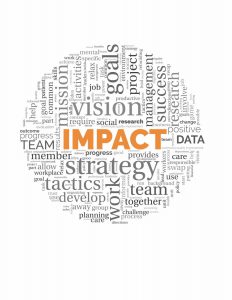At Transform Consulting Group, we are proud data nerds. Our evaluation services help clients collect, analyze, and share meaningful data. This blog post explained who to share your data with and why. In today’s post, we will go one step further by providing noteworthy tips on presenting your data. More specifically, we’ll discuss how to contextualize your data and why it is important. 
When presenting your data, you shouldn’t share it in isolation. For example, an after-school tutoring program might find that 75% of students pass their required standardized tests. If the program shared this data point by itself, its audience might have a lot of unanswered questions, like:
- How does this pass rate compare to students who don’t receive tutoring services?
- How does this rate compare to local and national data?
- What standardized tests is the statistic referring to?
To avoid this problem and present their data meaningfully, it would be best for the tutoring program to cite outside data sources to provide comparison, credibility, and context. By including this additional information, the program could more fully illustrate its impact and outcomes.
We are developing an evaluation plan with the Center for Leadership Development. Through this process, we have helped them demonstrate their impact by presenting their data within context. Here are three tips we shared with them that can help you use outside data sources to contextualize your data.
1. Find credible data sources that add context to your data.
When citing outside data, it’s important to make sure the data is credible, accurate, and relevant to your organization’s work. When working with clients like CLD, we often provide a resource sheet listing different data sources they can cite for comparison and context. An example of a data source we shared with CLD is the Indiana Commission for Higher Education’s College Readiness Dashboard. This was an appropriate choice because it is a reliable interactive data set that can be used to compare the outcomes CLD students experience to other students in their state and county in similar demographic groups. Check out this blog post for a list of our go-to data sources. This list may help you identify which data sources you can cite to move your organization forward.
2. Benchmark similar programs.
In a previous blog post, we explained that you may want to benchmark the practices of organizations similar to yours when making a programmatic change or looking to diversify your funding. Benchmarking can also be helpful when creating an evaluation plan and reporting your data. Looking at the outcomes of similar programs gives you comparable data to assess your program’s efficacy.
When working with CLD, we benchmarked similar programs such as College Bound in St. Louis. Their programming aims to help low-income students get into and graduate from college. Not only were they a similar program for CLD to compare their outcomes to, but they are also a great example of an organization who puts their data into context to make it more meaningful. For example, they compare their data to St. Louis Public School data and low-income students across the nation:
94% of College Bound students have matriculated to college immediately after high school, compared to 66% of St. Louis Public School graduates and only 51% of low-income graduates nationwide.
By presenting this statistic in the context of the students’ school system and other low-income students, College Bound is displaying the impact they are having and the success of their students relative to their peers.
3. Make sure you’re comparing apples to apples.
We always tell clients to make sure they’re not trying to compare apples to oranges. This phrase refers to the comparison of items that aren’t really comparable. An example of this came up in our work with CLD when reporting their alumni’s postsecondary persistence rates. When comparing their persistence data to local and national data, we needed to make sure the outside data set was defining persistence in the same way they were. They define it as persisting from Freshman to Sophomore year of college. Other sources defined persistent students as those who were enrolled at any institution or had attained a degree 3 years after first enrolling. Therefore, these two data points aren’t really talking about the same thing and aren’t comparable. By finding the right data sources to compare your data to, you ensure that the data and context is meaningful.
If you need help presenting your data in a meaningful way and using it to make data-informed decisions, give us a call to see how we can help through this process!





